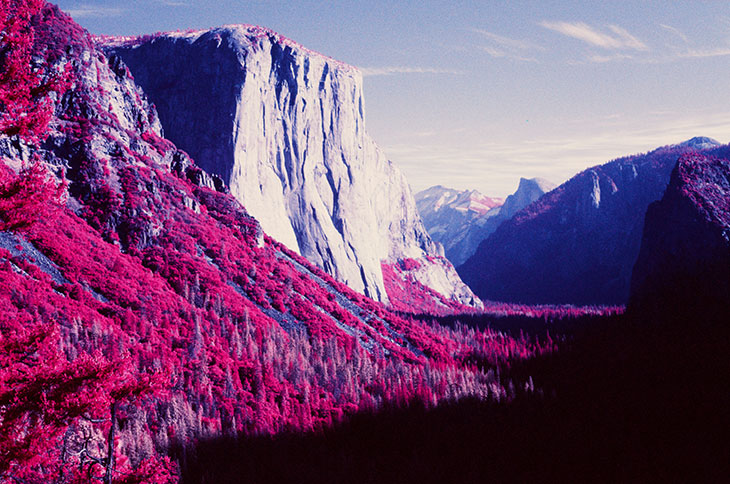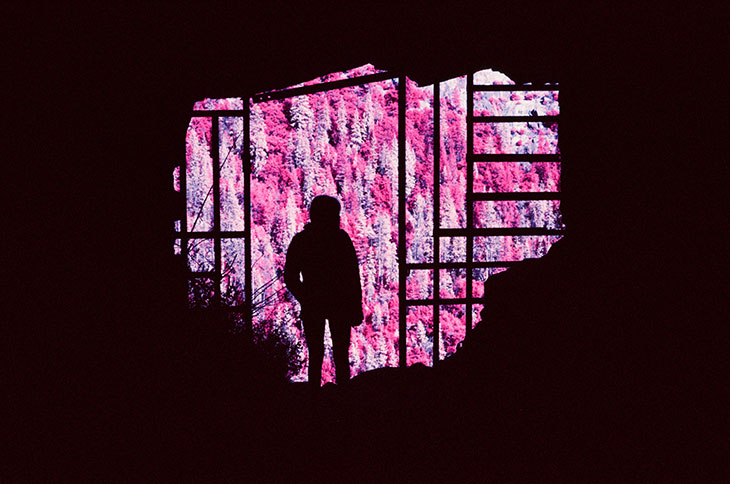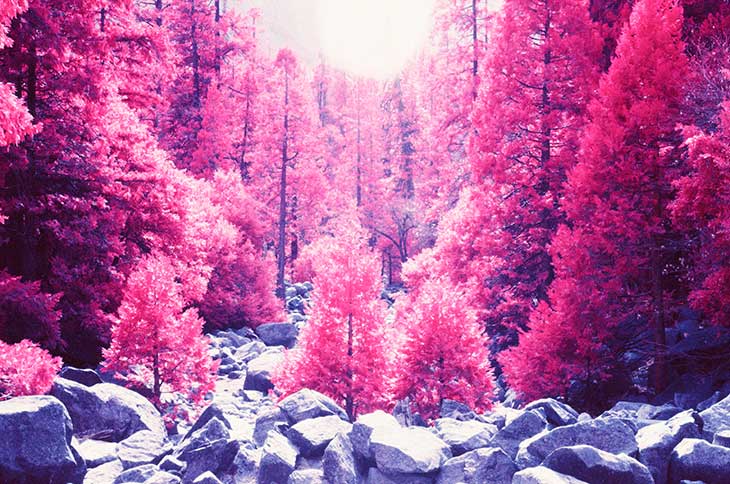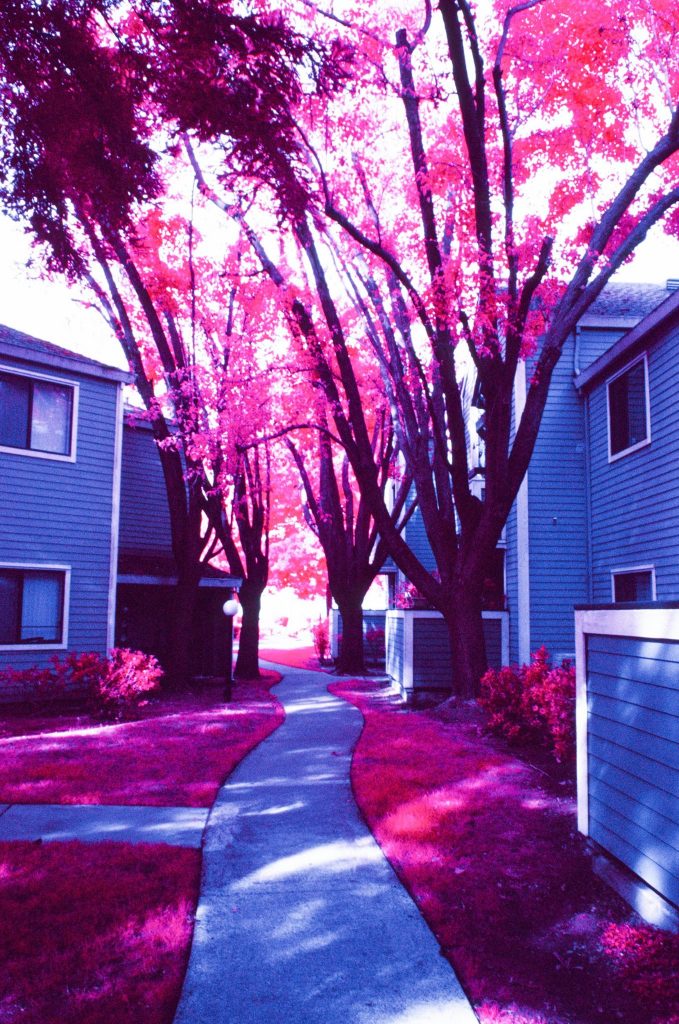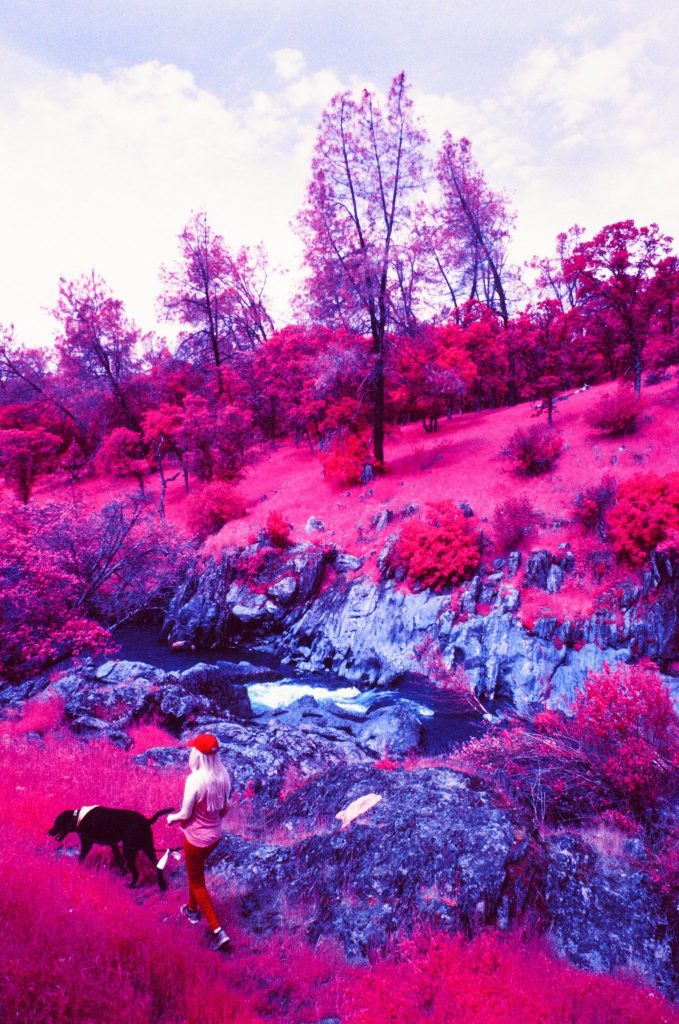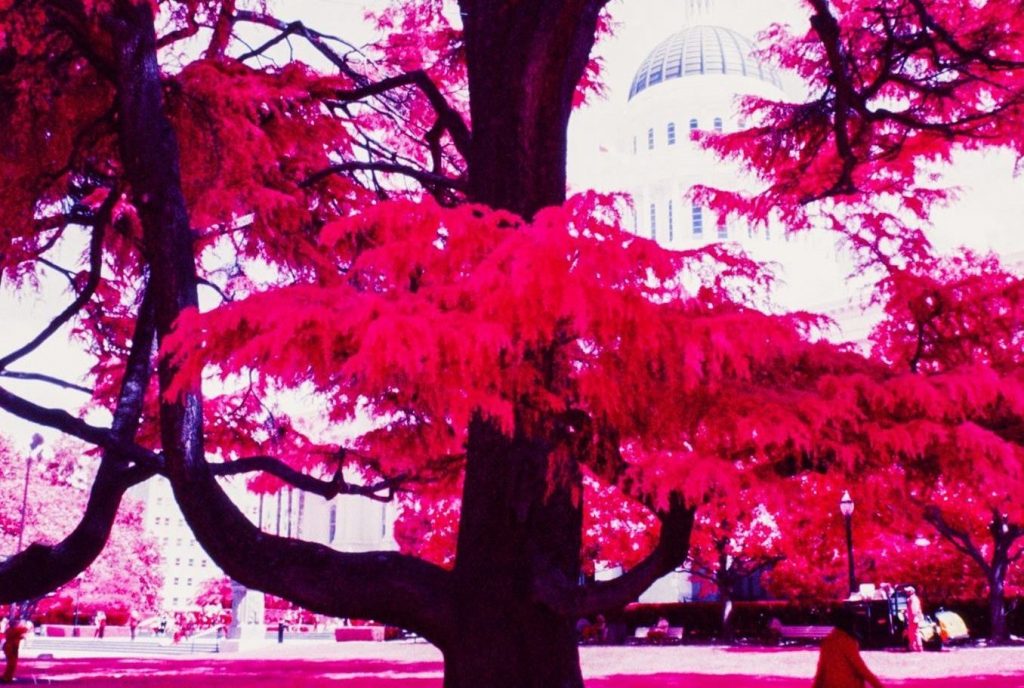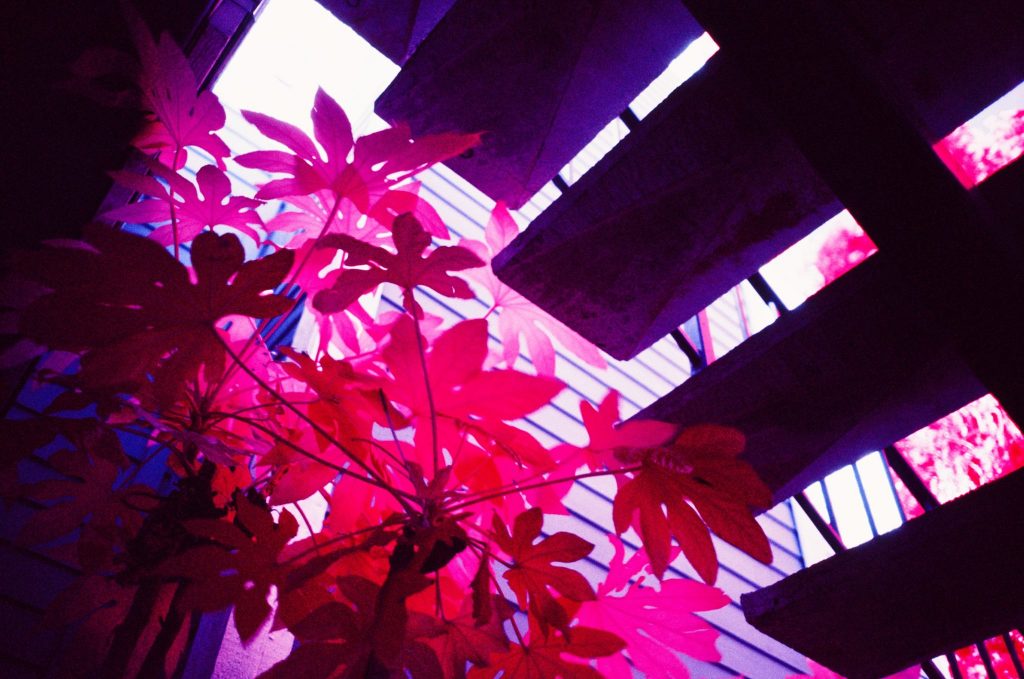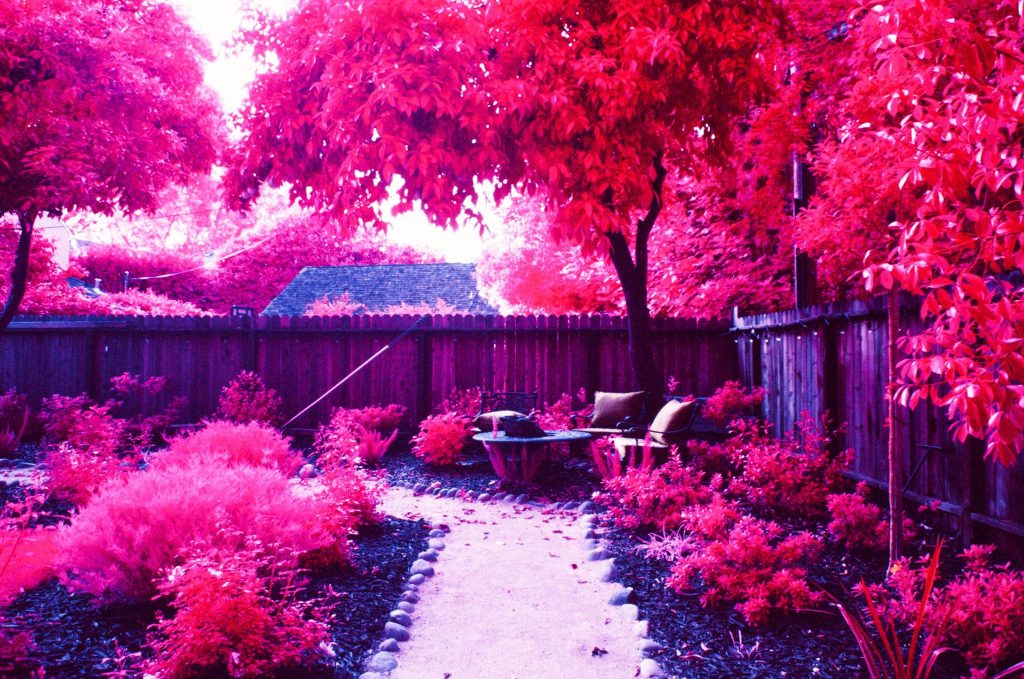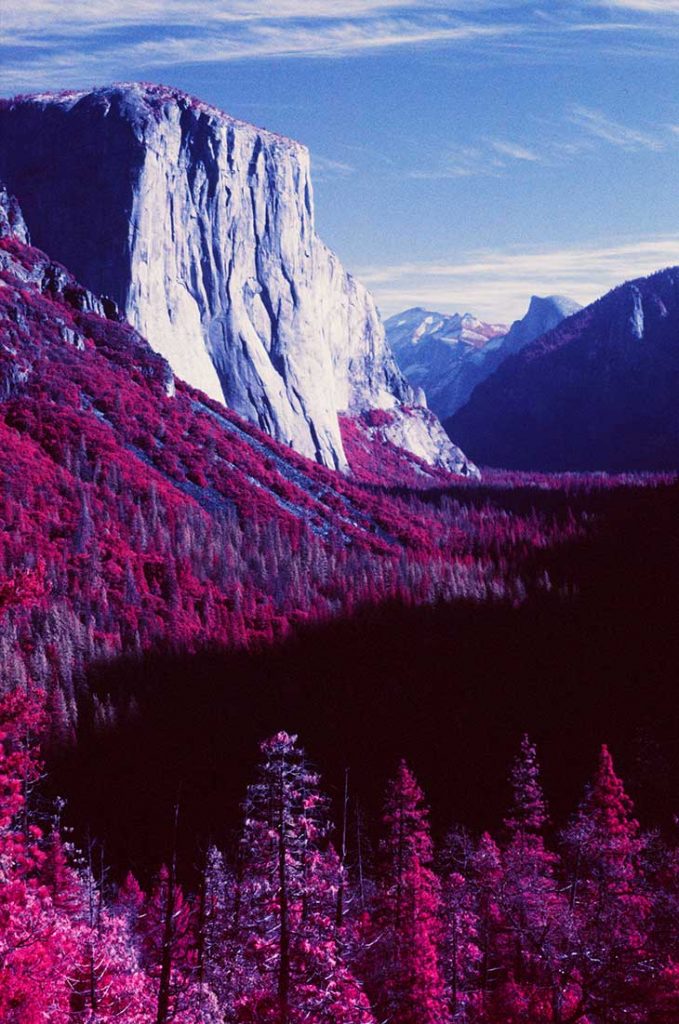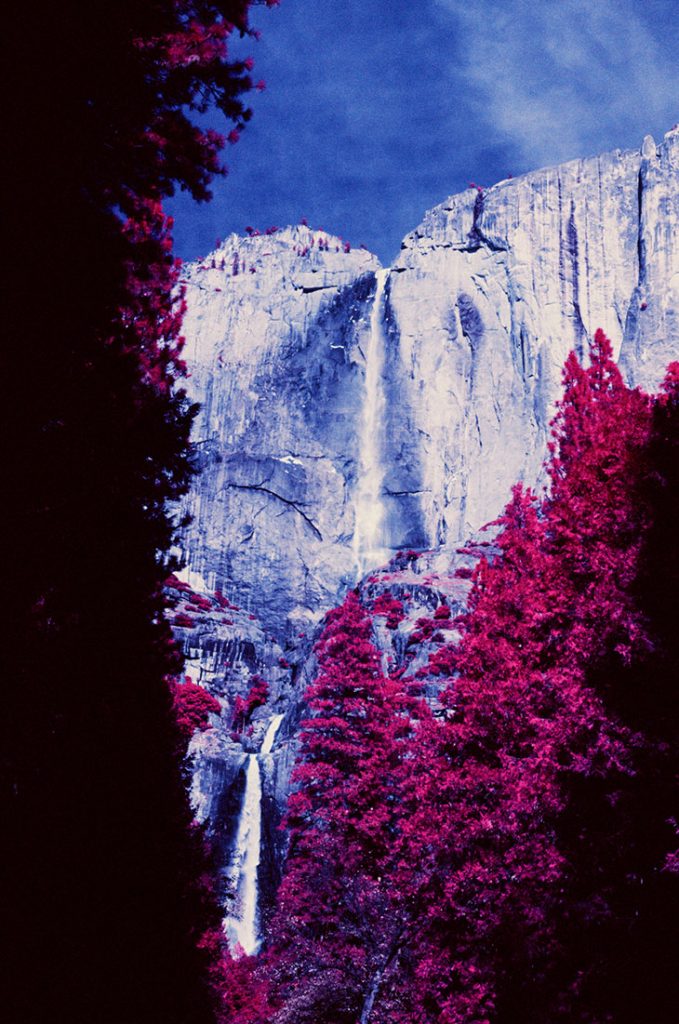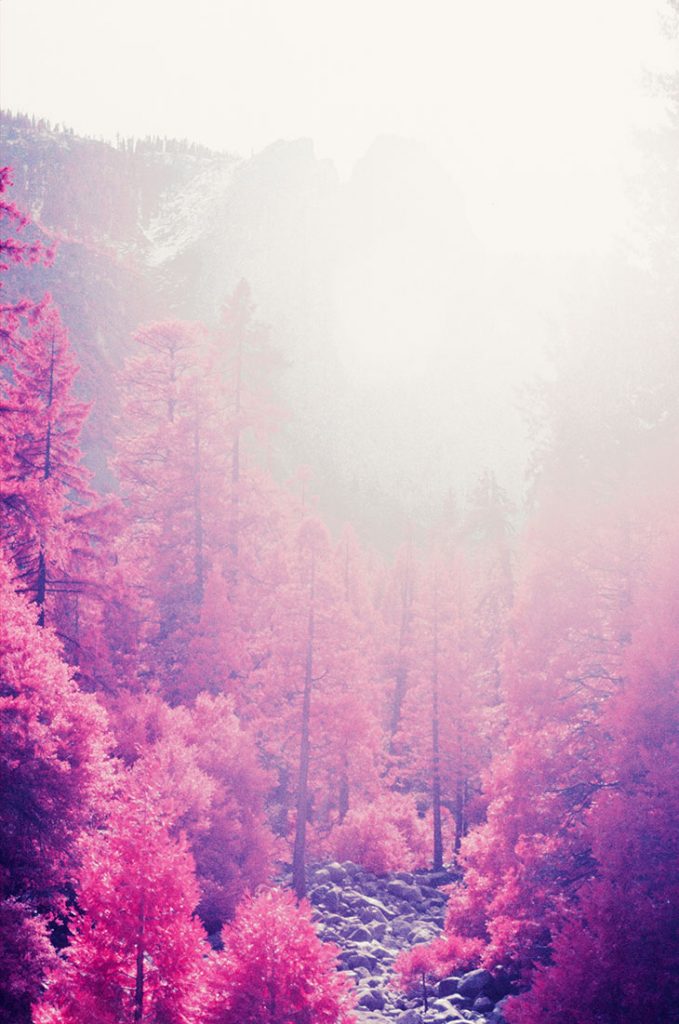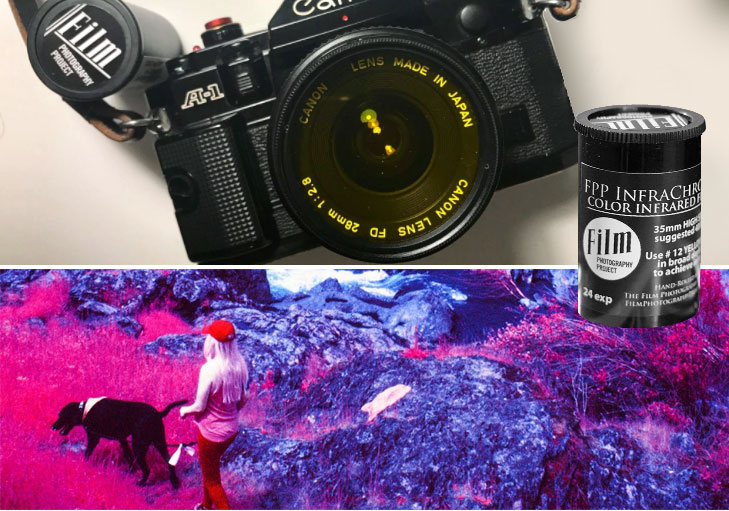
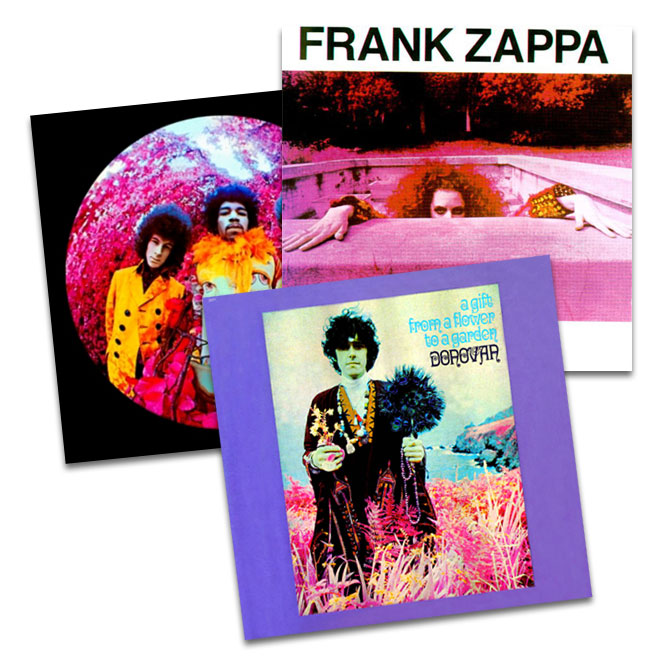 Infrared film photography creates wildly strange and artsy photographs. It’s not surprising that this psychedelic aesthetic was popular in the 1960’s and IR photos appeared on Jimi Hendrix, Donovan, and Frank Zappa’s album covers.
Infrared film photography creates wildly strange and artsy photographs. It’s not surprising that this psychedelic aesthetic was popular in the 1960’s and IR photos appeared on Jimi Hendrix, Donovan, and Frank Zappa’s album covers.
Color Infrared film captures invisible infrared light from the red end of the spectrum, light that’s not visible to the naked eye and characteristically turning green vegetation a bright red. Shooting analog infrared use to be complicated and expensive, results unpredictable and not making it worth the trouble. Now with commercially available infrared film and a color filter, anyone can experiment, creating artful science fiction landscapes.
What’s in this Article:
Infrared photography examples | How to Shoot IR Film | Shooting Tips | Developing IR Film
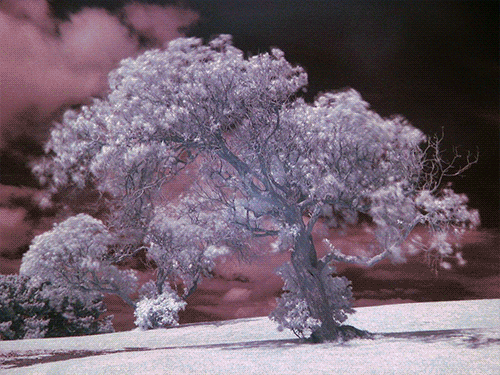
How was Color Infrared Film originally used?
The Infrared-sensitive process was developed during World War 1 by the United States to improve aerial intelligence photography through the haze. It was adapted for astronomy in the 1930’s and currently used in aerial survey applications such as vegetation and forestry surveys.
 Infrared Film Photography Examples
Infrared Film Photography Examples
Shot with FPP InfraChrome Color Infrared Film
The photos below are shot with Canon A-1, 28mm lens with a #12 yellow filter at f/11. The film is FPP’s Color Infrared Film, a true color positive infrared film that produces a color slide. FPP’s InfraChrome Color Infrared Film is identical to Kodak Aerochrome IIII 1443 and batch-tested, fresh and cold stored.
Buy Color IR Film at filmphotographystore.com (not an affiliate link or a paid promotion)
How to Shoot Color Infrared Film?
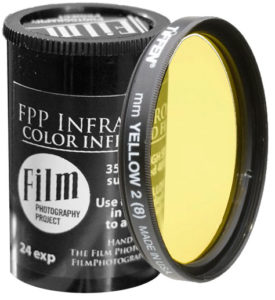 We encourage you to experiment. Don’t overthink it… or get the “Film Sweats”.
We encourage you to experiment. Don’t overthink it… or get the “Film Sweats”.
Environmental issues play a role in infrared film photography because it’s highly dependent on the strength of the infrared radiation present, only shoot in sunlight. When the sun is low (morning or late afternoon) the infrared radiation is much higher.
In order to achieve the in-camera color effect, you’ll need a color filter. It’s recommended that you shoot with a #12 yellow filter which is the filter used on the images above. Many shooters also experiment with orange or red filters. This will give you varied results (see below). When not using a filter the film behaves like a normal film with no special characteristics.
Filters on IR Film – Yellow Filter, Red Filter, Orange Filter. (left to right)
 Source: alternativephotography.com Making the most of Kodak aerochrome
Source: alternativephotography.com Making the most of Kodak aerochrome
Infrared Film Photography Tips
Color infrared results will vary wildly.
Best to manage expectations and proceed with an experimental attitude.
What camera can I use?
For Infrared Film Photography, use a camera that does not auto advance film (Auto load cameras use small LED lights to detect and count frames and will cause light leaks and potentially fog film). Use a camera that DOES NOT have LED sensors that detect the DX Code but a manual ISO/ASA setting. Examples: Canon Ae1, Pentax K1000, Nikon F series, Olympus Trip 35…
Use a Color Filter
Infrared Film Photography requires a color filter, otherwise, film behaves like a normal film.
- #12 Yellow Filter (Recommended: Tiffen Filter Yellow #12)
- Experiment with Red and Orange filters.
Load and unload in near darkness.
IR film is very sensitive to light should be kept in its light tight black canister. Load in a dark area and if your camera has a window on the back, use black tape to eliminate light leaks and fogging.
Shoot ONLY in Sunlight
The infrared film needs IR light and sunlight is the best source of IR light. Low sun (morning or late afternoon) has much higher infrared radiation. Shooting in shade (or backlit) or inside will produce poor results. Artificial lighting (Except tungsten halogen light) only emit visible light and will not give any IR effect.
Exposure
Each manufacturer provides ISO values for you to try. Because your light meter reads light, not IR, You’ll have to guess and bracket. Because the ratio of IR to visible light is always changing, a set ISO value won’t work consistently.
Focusing with Infrared Film Photography
Infrared light does not focus at the same point as visible light and is called an infrared focus shift. Older cameras and lens are best for infrared film photography and they will typically have a red line, dot or an “R” to help adjust for this infrared focus shift.
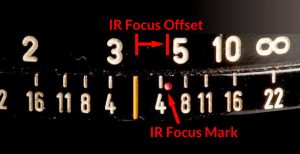
This is the infrared focus mark. It indicates how far you need to rotate the focus ring to achieve correct focus in infrared light.
See video below for more details
If you’re shooting at f/8 or higher, you shouldn’t need to IR focus shift. If in question, we recommend shooting at f/8 or higher on a wide angle lens and trying to photograph subjects that are far enough away to be at your lenses infinity.
See Through Clothing
Nope! Aside from a Sony Nightshot camcorder mishap in 1998 and some long wavelength IR surveillance cameras that can see through cotton clothing, IR film cannot see through clothes.
General Guidelines on Infrared Film Characteristics
- Color in Infrared – Typically blue, brown and dark green will be dark and red, white and bright green will nearly white.
- Foliage – Plants, trees, and grass all reflect IR light in slightly different ways and will all be slightly different shades of red in the developed image. The greener the plant, the whiter it will be in infrared. The differences will be accentuated with lighter filters. A light yellow filter will yield a larger spectrum of pinks and reds and it why a #12 Yellow Filter is recommended… at least to start. Red filters block the lighter, more subtle pinks.
- Water is more transparent because the film doesn’t pick up the shiny reflection of visible light. Sand and snow appear lighter than they do in real life.
- People – Outdoor portraits show off infrared photography’s odd qualities best, transforming people to look almost alien. Veins become visible from under the skin and dark hair and eyes appear darker. Lenses of sunglasses are often transparent.
- Skies – Skies appear very dark with puffy clouds popping against the background. This effect is greatest mid-day.
Storage and Shipping
- If not immediately using the film, put it in a ziplock bag and store film in a refrigerator.
- Short-term use in summer temperature and your shipping to the lab will not affect your film.
Developing Your Color Infrared Film
- Since Infrared Film is color slide film, you process it as E-6 film. You can also cross-process the film and have it processed as C-41 – which will produce a color negative.
- Ship the film in its light tight black canister.
- Label the Film in Big type so it can’t be missed in the lab “COLOR INFRARED – E6”
Develop your Infrared Film at The Darkroom

Important Note: Many labs don’t offer E-6 film processing and the ones that do can’t handle Color Infrared Film. If you’re not using The Darkroom to process your Infrared Film, make sure you speak to your lab prior to sending your film.

Special thanks to Film Photography Project
for their InfraChrome Color Infrared Film
Infrared Focus Shift
Lifepixel.com explains the differences in how visible light and infrared light are focused by normal camera lenses. Shows how infrared focus marks are used and how often there are more than just one mark on somes lens.
Information Sources:
Alternative Photography | Film Photography Project | plaza.ufl.edu/jenj | WikiPedia





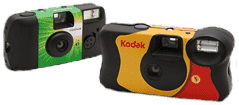
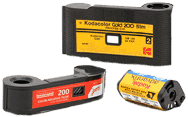
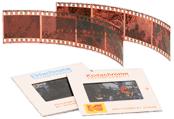



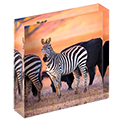
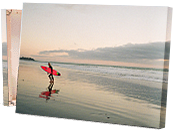
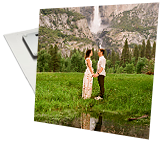
 Gift Cards
Gift Cards Film Index
Film Index FAQ
FAQ Desktop Framed Prints
Desktop Framed Prints